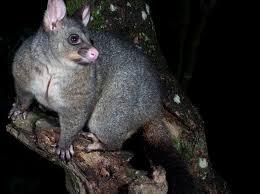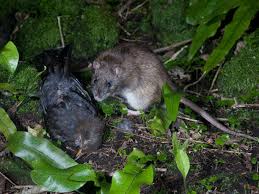Council uses pest management programmes to control pest animal species and to help safeguard indigenous biodiversity.
Pest animals
Pest animals in Lower Hutt are included in the following five programmes:
- Exclusion programme: To prevent the establishment of the pest animal that is present in New Zealand but not yet established in an area.
- Eradication programme: To reduce the infestation (population) level of the subject, to zero levels in an area in the short to medium term.
- Progressive containment programme: To contain or reduce the geographic distribution of the pest animal subject, to an area over time.
- Sustained species control programme: To provide for ongoing control of the animal, to reduce its impacts on values and spread to other properties.
- Site-led pest programme: To ensure that the animal, that is capable of causing damage to a place is excluded or eradicated from that place, or is contained, reduced, or controlled within the place to an extent that protects the values of that place.
Council collaborates with community groups and volunteers as a part of our pest control programme. Council also works with Greater Wellington Regional Council and employs contractors to carry out large-scale predator control work.
Introduced predators such as ferrets, stoats and weasels pose a significant threat to our remaining natural ecosystems and habitats and threatened native species and can have considerable negative impacts on primary production.
Mustelids attack prey that is much larger than themselves, and cause adverse effects on New Zealand’s native fauna for a number of bird species (including kiwi, penguins, wading birds, and passerines), lizards and native invertebrates. Stoats in particular are considered the primary factor contributing to the decline of mainland kiwi and have been linked to the disappearance of a number of other threatened indigenous bird species, such as the kōkako.
Possum (Trichosurus vulpecula)

Possum feeding habits pose a serious threat to the biodiversity of the Wellington Region. Possums spread diseases affecting domestic animals and people, including bovine tuberculosis (Tb). Their browsing damages and destroys forests and affect pasture, and vegetable and horticultural crops. They compete with native birds by eating berries and flowers and predate on their young and eggs.
Rat – Norway Rat (Rattus norvegicus) and Ship Rat (Rattus rattus)

Rats eat a variety of native flora and fauna, in particular native birds (eggs and fledglings), invertebrates, reptiles, snails, amphibians and lizards. Excessive consumption of seeds by rats can greatly reduce native seedling recruitment and ultimately modify plant communities in invaded ecosystems. They compete with native birds for nests and burrows and have been implicated in the decline of a number of threatened birds.
Volunteer Projects
Hutt City Council supports a number of Predator Free groups in Lower Hutt and provides free trapping equipment to help groups reduce the number of pest animals in Lower Hutt. To see if there is a Predator Free group in your neighbourhood check out Predator Free Hutt Valley.
